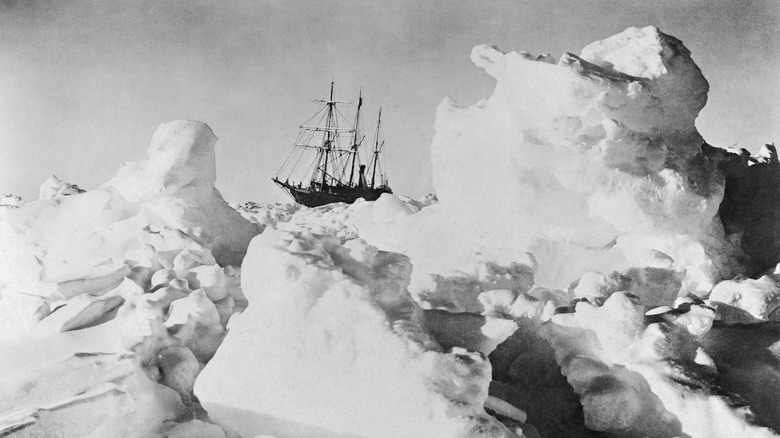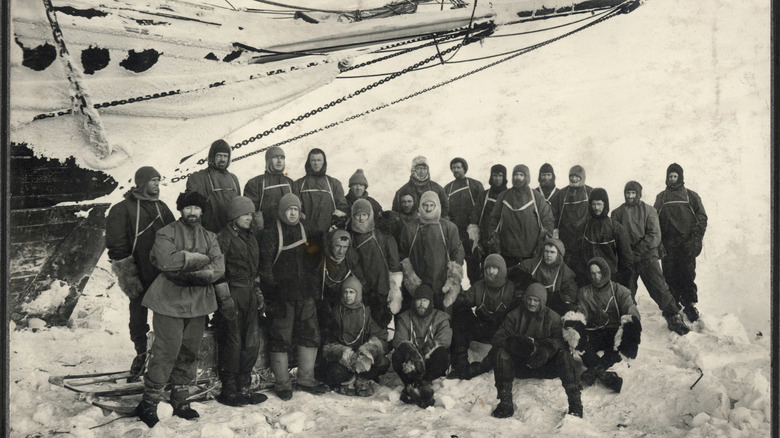How Scientists Found Ernest Shackleton's Missing Ship From 1915
The saying "third time's the charm" can quickly become "three strikes you're out." These idioms are essentially two sides of the same coin, and are a fitting analogy for the fate of Ernest Shackleton and his three attempts at reaching Antarctica, which could just as easily had different outcomes based on the flip of a coin.
To fully appreciate how scientists found irish explorer Ernest Shackleton's missing ship, we first need to know the circumstances by which it went missing. To do that, we must return to the very beginning of the 20th century. The man who is regarded as one of the greatest explorers of the era had some incredibly bad luck when it came to the southernmost continent.
His first expedition took place in 1901 as a third lieutenant aboard the Discovery, captained by Robert Falcon Scott as part of the British National Antarctic Expedition. After the party trekked across the Ross Ice Shelf (the world's biggest chunk of floating ice), he got sick and had to be sent home. He was 400 miles from the South Pole, the furthest south anyone had ever been.
In 1907, he led his own expedition aboard the Nimrod. Ultimately, that attempt failed when they ran out of food and had to turn around before starving. This time, he got a mere 97 nautical miles (112 miles) from his final destination. Shackleton's third and most brutal trip began in 1914 aboard the Endurance, named after his family motto, "By endurance we conquer." Ironically, the ship's name would perfectly sum up the very trait the crew most needed in order to survive.
The crew did not go down with the ship
The Endurance set sail for Antarctica on December 5, 1914. Aboard the ship was a crew of 27 men (one being an actual stowaway), 69 dogs, and a cat. The primary mission was to travel across the continent, starting from a base on the Weddell Sea and ending in McMurdo Sound over the Ross Sea (known as the Imperial Trans-Antarctic Expedition).
However, fate once again intervened. Two days after pulling up anchor, the Endurance entered the ice pack and spent the next several weeks moving precariously south. Finally, on January 18, the ship became inexorably trapped in the Weddell Sea. They were just one day away from reaching their destination. The crew tried valiantly for the next month or so to free the ship from its icy prison. Still, by the end of February, temperatures had plummeted so precipitously that it became hopelessly stuck.
The men, dogs, and cat lived aboard the ship for the next several months. Then, on Oct. 27, Shackleton issued the order to abandon the vessel as the increasing pressure from the ice ripped off the rudder and pulverized the stern. While the crew survived their harrowing journey, the ship did not, making its way to a water grave on November 21, 1915. Miraculously, 107 years later, the ruins of the Endurance were found.
The Weddell Sea covers approximately 1.1 million square miles, and is called one of the "most treacherous environments in the world." That didn't stop the Endurance22 Expedition from looking for the fabled wreck.
The ship that endured a century in an ice bath
The voyage began in February 2022, when the S.A. Agulhas II, a specially designed ship for the icy terrain. The team's primary goal was to find and film the wreck of the Endurance, but also to conduct other research, including the effects of climate change on the environment.
They didn't know the exact location of the Endurance, but detailed coordinates recorded by the Endurance's captain, Frank Worsley, narrowed down the search grid. However, these were taken using an old-school sextant on the day the ship sank, not pulled from GPS or satellite data. Additionally, Worsley estimated the direction and speed of the ice flow, so there was no telling where the wreckage actually landed.
Given the grueling conditions, the Endurance22 Expedition used SAAB's Sabertooth, a hybrid vehicle that combined a Remote Operating Vehicle's ability to be linked to the surface with that of an untethered Autonomous Underwater Vehicle (AUV). No matter the conditions, they could be launched and sent 100 miles away independently of the ship.
With a dive depth of 13,123 feet, each Sabertooth was equipped with High-Definition cameras and sonar capable of sending data in real. The underwater vehicles searched a one radius for two weeks. The wreck was found in 10,000 feet of water on Saturday, March 5, 2022.
Marine archaeologist Mensun Bound said it was in a "brilliant state of preservation" when they found it, claiming it was "the finest wooden shipwreck" he'd ever seen. Regarded as a historic site and monument, the Antarctic Treaty will ensure the wreck remains safe and unharmed.

